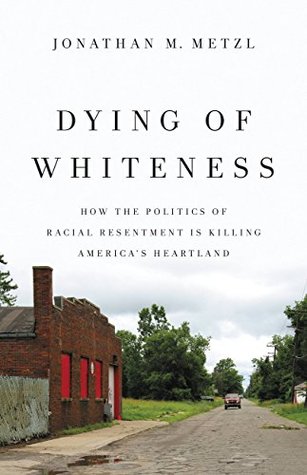More on this book
Community
Kindle Notes & Highlights
Read between
October 13 - October 27, 2020
But just as frequently, when I met with middle- and lower-income white Americans across various locales, I found support for a set of political positions that directly harmed their own health and well-being or the health and well-being of their own families.
Even on death’s doorstep, Trevor wasn’t angry. In fact, he staunchly supported the stance promoted by his elected officials. “Ain’t no way I would ever support Obamacare or sign up for it,” he told me. “I would rather die.” When I asked him why he felt this way even as he faced severe illness, he explained, “We don’t need any more government in our lives. And in any case, no way I want my tax dollars paying for Mexicans or welfare queens.”
Trevor voiced a literal willingness to die for his place in this hierarchy, rather than participate in a system that might put him on the same plane as immigrants or racial minorities.
People like Trevor who put their own bodies on the line, rather than imagining scenarios in which diversity or equity might better the flourishing of everyone.
My narrative highlights a reality that liberal Americans were often slow to realize: Trump supporters were willing to put their own lives on the line in support of their political beliefs.
The white body that refuses treatment rather than supporting a system that might benefit everyone then becomes a metaphor for, and parable of, the threatened decline of the larger nation.
Americans are then, literally, dying of whiteness. This is because white America’s investment in maintaining an imagined place atop a racial hierarchy—that is, an investment in a sense of whiteness—ironically harms the aggregate well-being of US whites as a demographic group, thereby making whiteness itself a negative health indicator.
Tennessee’s refusal to expand Medicaid cost every single white resident of the state 14.1 days of life.
In this book, I do not mean white as a biological classification or a skin color but as a political and economic system.
our nation urgently needs to recognize how the systems of inequality we build and sustain aren’t benefiting anyone.
society coded white gun owners as “protectors” and black gun owners as “threats.”
drug overdose, the most common method in suicide attempts in the United States, is fatal in less than 3 percent of cases.17
Roughly 85 percent of firearm suicide attempts result in death.
92 percent of gun suicides in the United States were committed by non-Hispanic white persons.
the percentage of non-Hispanic white people in the United States hit an all-time low of 62 percent in 2013 and kept falling every year after that.
for each African American who uses a gun to commit suicide, five are killed by other people with guns.
US adults without a high school diploma can expect to die nine years sooner than college graduates.


